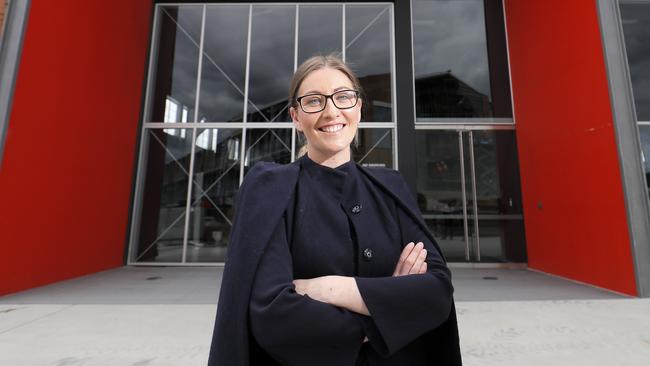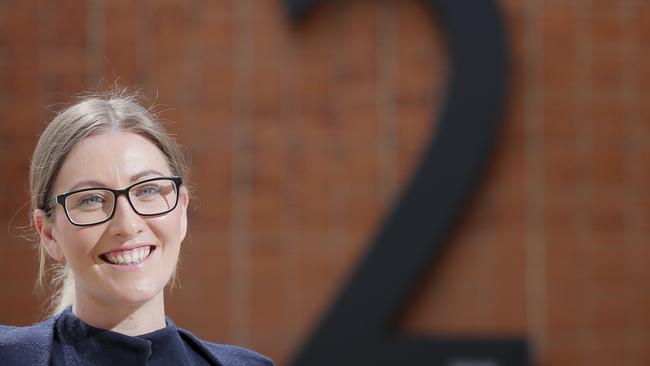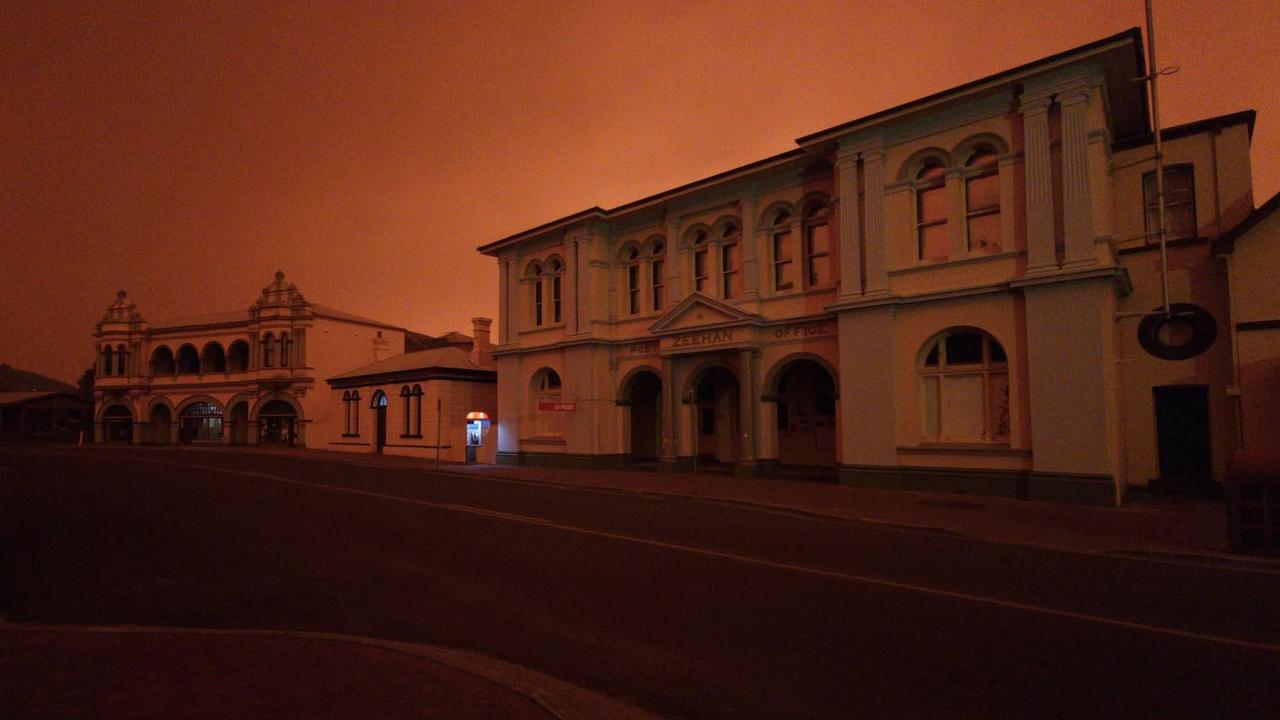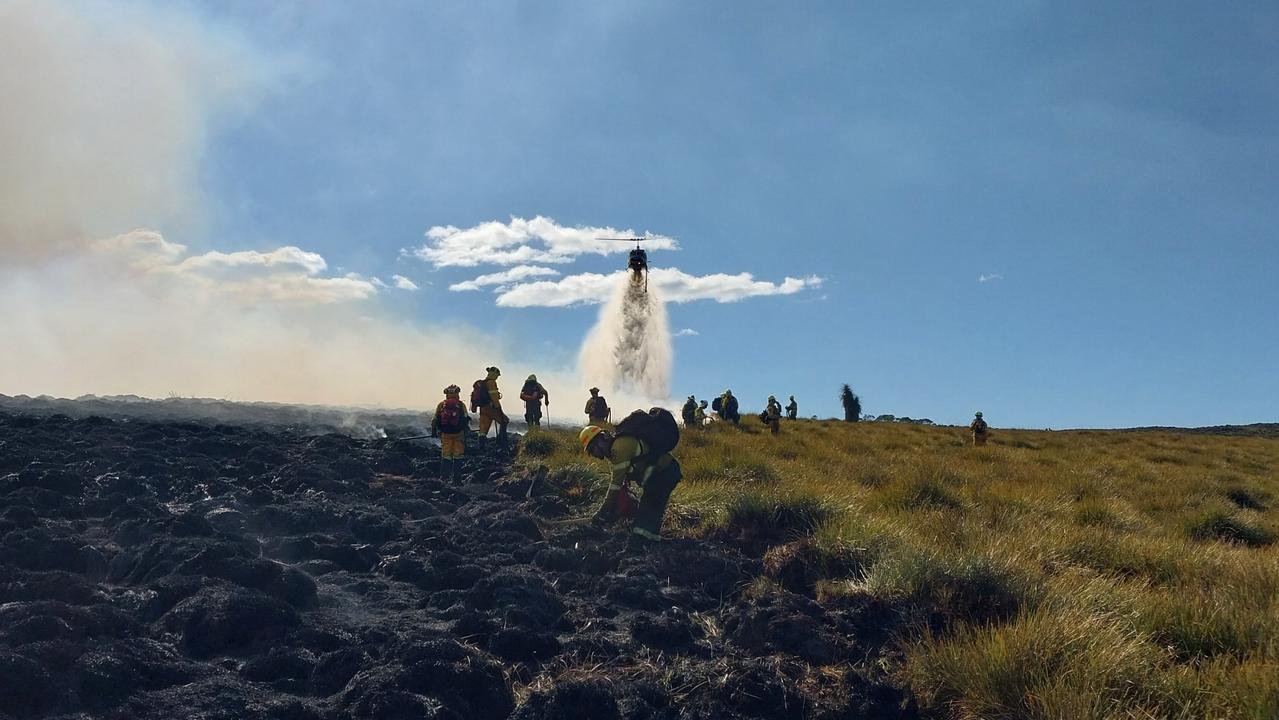Behind the scenes of Hobart’s cruise ship boom
Possums, fires, seasickness. What really happens behind the scenes of Hobart’s cruise ship boom?

IT certainly happens, and one poor couple got to watch it.
Sightseeing on Mt Nelson and happily taking photos of the cruise ship they’d arrived in Hobart aboard, they suddenly noticed it pull away from shore.
By the time they’d jumped back into their tour bus and sped to Macquarie Wharf, it was heading down the River Derwent.

“Up pulls the car and two passengers, quite distressed, get out,” said TasPorts’ Kristy Little.
“They asked, ‘Will it turn around and come back?’”
It didn’t. Next stop Adelaide, by plane — at their own expense.
“They’re on such critical schedules to sail to the next destination and any delays will have impacts on fuel costs,” Ms Little said.
Getting 2500 passengers back on board in time for departure is just one of the logistical challenges an army of workers faces every time a cruise ship visits Hobart.
Those challenges are coming more frequently, with visits to the city increasing from 32 last summer to 48 this season and expected to hit the 60s in 2017-18. Burnie, Port Arthur and Wineglass Bay also host ships.
An important part of the state’s tourism success story, these visits are expected to pour $30 million into the Tasmanian economy this year, Australian Cruise Association (ACA) figures suggest.
Local authorities have dealt with passengers too seasick to continue their voyage, an on-board fire and even a rogue possum that thrilled arrivals in the Mac2 cruise ship terminal. But the behind-the-scenes preparations begin well before a ship’s funnel is spotted on the horizon.
Ms Little, 32, oversees those plans, which can begin with a booking two years before the visit and also involve shipping agents, Border Force, Biosecurity Tasmania and tourism bodies.
Detailed plans are drawn up for each arrival — berthing, security and disembarking passengers.
Pilots greet and board each vessel and accompany ships stopping at Port Arthur all the way to Hobart.
Separate TasPorts teams are in charge of tying up the huge ships and putting the gangway in place.
“This is a really critical phase for the cruise ships, the arrival experience is the priority, making sure that the passengers get in and off the ship as quickly and safely as possible,” Ms Little told the Sunday Tasmanian.
When Carnival Spirit became the first arrival of the season last month, it brought with it 2680 passengers and 930 crew.
A ship like it, 293m long and weighing 88,500 gross tonnes, can go through 150 tonnes of fuel each day.
Passengers eat up to 20 tonnes of food each week, including nine tonnes of meat, one tonne of bananas and 29,000 eggs.
The surprise, then, is that little of this is sourced while berthed in Tasmanian ports.
Some Tasmanian products are offered but the ships are stocked interstate for the full cruise.
Hobart, however, is fast becoming a favourite destination for the Carnival line’s ships.
The cruise line has increased its visits to Hobart from one in 2013 to a scheduled five next year.
“The absolute key is a deepwater harbour,” said Carnival Cruise Line vice-president Jennifer Vandekreeke.
“A ship our size can’t even get in to Brisbane because we’re too big.
“One of the best things about Hobart is the great harbour — we’re right there, we’re right down town.”
It’s once passengers have disembarked that the economic benefits begin for Tasmania, but not without another huge effort.
The Hobart City Council has a roster of about 60 volunteers who welcome cruise ship passengers with a map, a smile and local knowledge.
About half of all passengers take a pre-booked tour, with the others wandering the city and waterfront, or hooking up for a tailored tour with an independent operator such as Heather Henri’s Let’s Show You Tasmania.
Tours taking in the city, Mt Wellington, Richmond and Bonorong Wildlife Sanctuary are the most popular.
The Tasmanian Travel and Information Centre puts on extra staff for cruise arrivals, including a desk inside the terminal.
It’s all about getting passengers onto tours they’re interested in fast, said manager Alex Heroys.
“A good experience is not standing in a queue for four hours waiting to find the thing you want to do is sold out,” he said. “It’s that food, retail, heritage, nature sort of thing — the same targets that are being reflected in the general tourism sector.”
A possum inside the new terminal in 2013 added to Hobart’s allure, Mr Heroys said.
“A couple of passengers saw the possum and thought that was the best thing ever,” he said.
Many crew members continue to work aboard the liner but those with the day off have their own priorities.
Carnival Spirit’s crew members come from 80 countries, not including Australia, so getting in touch with home is important.
Crews spent $1.8 million in Hobart during the 2014-15 season, according to the ACA.
Crew welfare is a new focus for the industry and Hobart now offers them free Wi-Fi and special offers from local businesses, said Ms Little.
“They’ll go to the chemist, they’ll go and get some fresh groceries,” she said.
“Others will make their way around the city and have a look around.”
Attracting cruise lines might seem simple, given the exponential growth that delivered 160,000 passengers to the state last season. Yet marketing is a constant task if new ships such as Ovation of the Seas, the region’s largest cruise ship, and Cunard Line’s flagship Queen Mary 2 are to be lured to Tasmania. Both are coming this season.
Fees need to be reasonable and good infrastructure is vital, with $2.9 million spent in Hobart and $1.5 million in Burnie to allow bigger vessels to berth.
“The port infrastructure is a big one but they’re not going to just come to a destination because they can tie up at a berth,” Ms Little said.
“It really comes down to the appeal of the destination and having good quality attractions and tours available.
“Beyond that it’s the people and the welcome that’s provided and how well co-ordinated the visitor services are. If passengers are happy, you’ll tend to see repeat calls or more visits being booked.”
Carnival’s Ms Vandekreeke agreed.
“Our guests vote with their wallets,” she said. “When we’re looking at places to sail to we’re looking at how much people are willing to pay to go to a certain destination.
“We’ve found consistently that our sailings to Tasmania sell out quickly and people are willing to pay premium to go to Tasmania.”
Originally published as Behind the scenes of Hobart’s cruise ship boom



